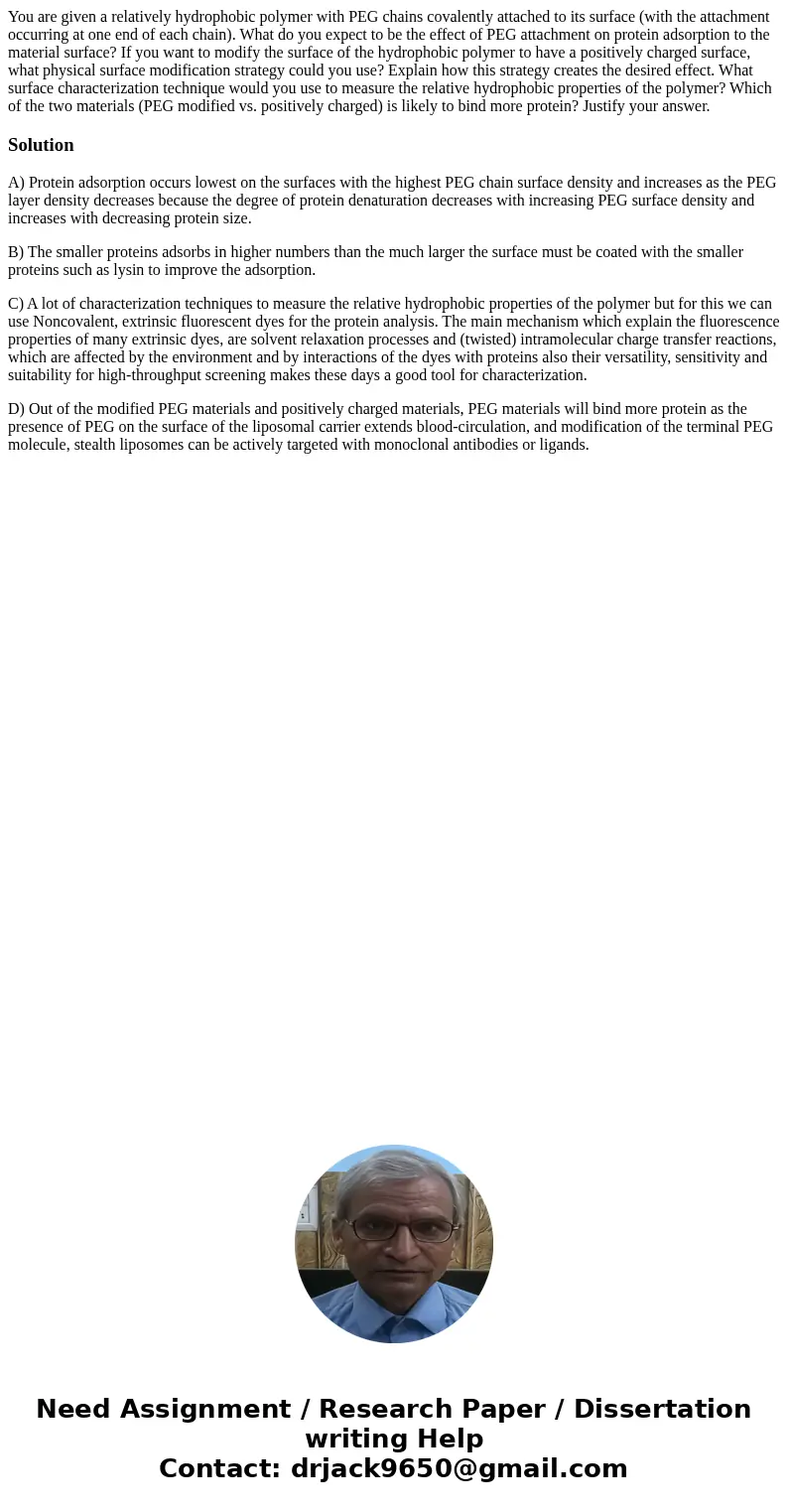You are given a relatively hydrophobic polymer with PEG chai
Solution
A) Protein adsorption occurs lowest on the surfaces with the highest PEG chain surface density and increases as the PEG layer density decreases because the degree of protein denaturation decreases with increasing PEG surface density and increases with decreasing protein size.
B) The smaller proteins adsorbs in higher numbers than the much larger the surface must be coated with the smaller proteins such as lysin to improve the adsorption.
C) A lot of characterization techniques to measure the relative hydrophobic properties of the polymer but for this we can use Noncovalent, extrinsic fluorescent dyes for the protein analysis. The main mechanism which explain the fluorescence properties of many extrinsic dyes, are solvent relaxation processes and (twisted) intramolecular charge transfer reactions, which are affected by the environment and by interactions of the dyes with proteins also their versatility, sensitivity and suitability for high-throughput screening makes these days a good tool for characterization.
D) Out of the modified PEG materials and positively charged materials, PEG materials will bind more protein as the presence of PEG on the surface of the liposomal carrier extends blood-circulation, and modification of the terminal PEG molecule, stealth liposomes can be actively targeted with monoclonal antibodies or ligands.

 Homework Sourse
Homework Sourse